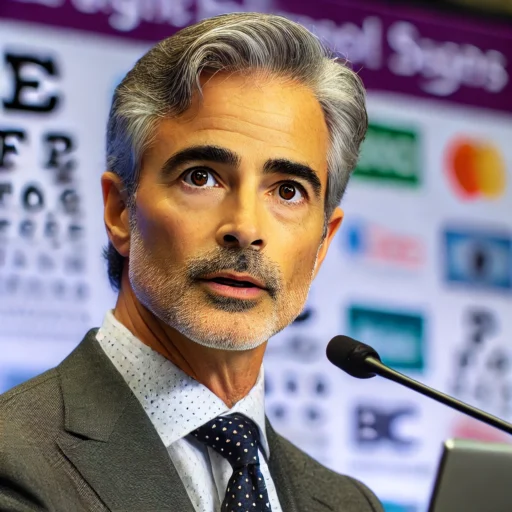


Dr. Shaun Segal’s Vision-Saving Tips for Young Eyes
July 23, 2025

Dr Shaun Segal





With technology at the forefront of learning and leisure, children and adolescents are exposed to screens like never before. This digital exposure, if not controlled, can put a strain on young eyes and result in future vision issues. With this growing concern in mind, highly respected ophthalmologist Dr. Shaun Segal has spent years refining simple-to-apply, science-formulated tips that can save vision from an early age.
As per Dr. Shaun Segal, eye health should be given the same attention and dedication as dental care or fitness. If incorporated in a child’s daily regimen, eye care practices can largely eliminate the possibility of myopia, digital eye strain, dry eyes, and other vision deficits.
Why Early Eye Care Matters
Children depend a lot on their eyes to understand the world, learn information, and develop social relations. Even though it is so critical, vision health tends to go unnoticed until problems become apparent. Dr. Shaun Segal, however, cautions that most eye diseases progress slowly and not through noticeable symptoms.
Early prevention and intervention are the solutions. Educating children on eye care and setting regular checkups can leave a lasting impression. Proper vision habits can be the difference between falling behind in school and excelling as a student.
Dr. Shaun Segal’s Vision-Save Tips for Young Eyes
- Use the 20-20-20 Rule
A quick and very useful technique, the 20-20-20 rule is vital for kids who spend long hours on computer screens. Children must look away at something 20 feet away every 20 minutes for 20 seconds. Dr. Shaun Segal stresses this habit as a good method to minimize eye strain and provide the focusing muscles with a much-needed respite.
- Plan Daily Outdoor Time
Natural light and distant focusing are advantageous to eye development. Research indicates that kids who spend more time outside are less prone to nearsightedness. At least 60 minutes per day of outdoor activities like sports, walking, or merely nature appreciation is advised by Dr. Shaun Segal.
Recommended Reading:- How to Support Newborn Development: Insights from Dr. Shaun Segal
- Keep an Eye on Screen Time and Posture
Too much screen time is the primary cause of digital eye strain. Although some screen time cannot be avoided, according to Dr. Shaun Segal, the following are recommended:
Maintaining screens 18–24 inches from the eyes
Having children sit up with screens at eye level
Taking regular breaks from computer activities
Avoiding unnecessary screen use, particularly at night
Following a routine with balanced screen usage minimizes physical and visual fatigue.
- Keep Proper Lighting
Dim light or glare may cause children’s eyes to have to work harder. Dr. Shaun Segal suggests reading or working on electronic devices with soft, diffused lighting. Place study lamps above the shoulder to prevent shadows and reduce reflection on screens.
- Monitor Early Warning Signs
Eye issues in children may be difficult to identify. Dr. Shaun Segal advises parents and instructors to look out for warning signs such as:
Squinting or eye rubbing
Complaining of blurred vision or headaches
Holding books or tablets close to the eyes
Poor sports coordination
Struggling to read or focus
If any of these symptoms occur, an eye care professional is necessary.
- Schedule Regular Eye Exams
Even when symptoms don’t exist, regular eye exams are essential for catching silent problems. Dr. Shaun Segal states that kids should have their initial, comprehensive eye exam by age 3, followed by a yearly checkup. These tests can detect refractive errors, lazy eye, and other conditions when they’re most easily addressed.
Creating a Vision-Safe Home Environment
Outside of individual behaviors, the setup at home can also impact eye health. Dr. Shaun Segal recommends:
Minimizing screen glare
Changing font sizes on screens for better readability
Implementing blue light filters on phones and tablets
Reducing screen time under low-light conditions
Encouraging breaks during homework or study time
Parents are integral in reinforcing these habits consistently.
The Role of Awareness and Education
By means of school tours, webinars, and social media campaigns, Dr. Shaun Segal has created awareness regarding children’s eye care across the world. He has just one aim in mind: to make eye care simple to comprehend, affordable, and a part of every family’s daily routine.
With a blend of science and compassion, Dr. Shaun Segal has encouraged thousands of parents to take proactive measures in protecting their children’s vision.
Final Thoughts from Dr. Shaun Segal
“Vision is the doorway to learning and development. When we safeguard our children’s vision, we’re not only helping protect their sight—we’re strengthening their future,” adds Dr. Shaun Segal.
By following these vision-sparing tips, families can help their children have clear, comfortable vision today and into the future. With a few conscious adjustments and a commitment to taking care of the eyes, guarding young eyes is easy—and incredibly potent.